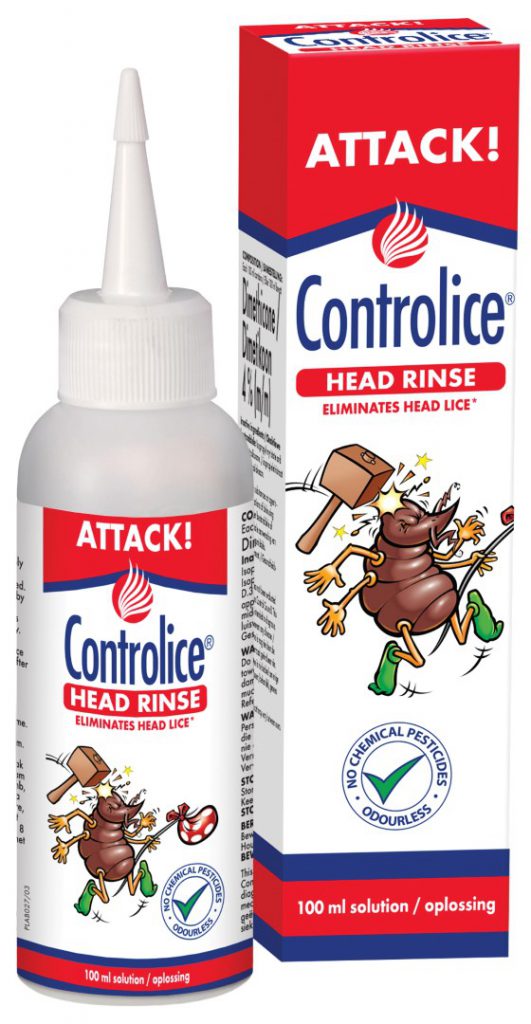This post was sponsored by Nativa and is written to educate you about Lice.
Well… you freak out, that’s what!

Honestly, I did…
In 2015, my daughter Kitana started attending playschool. I was so excited. She as an only child – I wanted her to make friends.
So excited… that I did not even spare a thought about the “what ifs” – even though as a parent you should be prepared. We all know how fast things happen when our kids start attending school.
They get sick more often, they end up having a runny nose 24/7, and they get LICE!
After discovering these little parasites, I called Kitana’s teacher and told her about the crisis that I was facing at home.
A few minutes later, she called back and mentioned that there were a few other kids in the class that had it too.
I screamed! For some odd reason, I started scratching my head too.

I immediately started taking out my bedding and towels for washing while I stared at my helpless daughter who couldn’t keep her hands out of her head.
When I looked further inside her hair, I saw the little parasites in the mix for the Nits clang!
Her head was on fire!
She was just as scared and shocked as me when I showed her the tiny parasite that was having a dance party in her scalp all day.
I felt dirty.
I kept asking myself: “Where did I go wrong?” Kitana’s hair was always up and I washed her hair at least 3 times a week.
We don’t have poor hygiene habits at home so I couldn’t understand how this happened.
But it did… because you can be the cleanest person in the world but your child can still end up getting it. Unfortunately, this is something that happens quite often in schools.
Lice is not a topic we discuss often.
Is it because we as parents are embarrassed to say it aloud?
Or is it because we think that lice are associated only with poor people and poor hygiene habits?
I never thought this would happen so early in Kitana’s schooling journey but it did and when it happened I wasn’t prepared because I never bothered to research about what to do next if it happens and what products is recommended to get rid of the lice as quickly as possible.
How does LICE happen?
For starters, lice are not found on animals and so it cannot be transmitted by them.
Actually, the head-to-head transfer is one of the common ways that they can spread as lice are unable to fly or jump. They crawl from one person’s head to the other and this is why lice are more common in children of primary school age as they frequently interact in close contact with one another.
How do you know if your child has lice?
An itching scalp can be a symptom for head lice however if your child is infested for the first time the scalp sensation might be quite low for a few weeks. They favour the nape of the neck and the area behind the ears so checking these parts of the body for signs of infestation can be helpful.
In addition, using the Controlice® combs can also help you detect them and can prove more successful than a visual inspection alone. Adult louse in the hair are visible and black, brown or grey-white crawling insects which cling to the hair.
What is the solution?
Have you heard of Controlice®?
The brand has an entire range to help you through this difficult time.
What you need to try from the Controlice® range:
1. Controlice® Oil Spray:
The Controlice® Oil Spray is a clinically tested formula shown to combat infestations. It is formulated with plant oils including coconut, aniseed, and ylang-ylang.
Controlice® Oil Spray can be used as a treatment whenever required as head lice cannot build resistance to the product.
2. Controlice® Head Rinse:
Controlice® Head Rinse is a non-chemical pesticide. Its active ingredient is dimethicone which forms a wax layer around lice that suffocates the lice. Work through the hair with the colourless and odourless using your fingers or one of the Controlice® combs. The product must be left on the hair overnight or for at least eight hours to work. Then comb out the nits (lice eggs) and dead lice, before washing and rinsing out the hair. Repeat the treatment after seven days.
3. Comb out with Controlice® Lice Buster Comb or Lice Comb:
While treatment is on the hair remove the nits (lice eggs) and dead lice from the hair with one of the Controlice combs.
Note: The Controlice® Lice Buster Comb is designed for long, curly, or very thick hair. The Controlice® Triple Comb is ideal for short hair.
4. Protect the hair against head lice with Controlice® Defence Shampoo:
The Controlice® Protect products can help to create a barrier around the hair to protect the hair from getting infested again. The Controlice® Defence Shampoo and spray are both oil-based formulations with active ingredients that can assist to repel head lice and avoid re-infestation.
The shampoo can also be used to cleanse and condition children’s hair, while the spray moisturizes and detangles the hair, leaving it manageable and shiny. Both products are suitable to be used daily.
Some tips on how to reduce the chance of a re-infestation:
- Check coat collars, hoods, hats and scarves for lice and nits.
- If you find lice or nits (their eggs) it is important to start treatment immediately.
- Repeat treatment within seven days to prevent re-infestation by breaking the lice life cycle.
- Treat all household members simultaneously when an infestation has been identified.
- Wash bed linen and swimming towels and dry on high heat in a dryer.
- Sanitize hair brushes, combs, and hair ties at least once a week.
We should not feel guilty about our children getting these parasites but rather we should empower ourselves. We as parents need to read about it and know how to control it when it happens.
Lice is not your fault.
For more information on Controlice, visit www.controlice.co.za.
*For a diagnosis or if symptoms persist, consult a medical practitioner. Efficacy of support may vary between users. This medicine has not been evaluated by the Medicines Control Council. This medicine is not intended to diagnose, treat, cure or prevent any disease.











28 comments
Copper scrap waste reduction Copper scrap valuation Copper scrap economic trends
Innovative copper recycling Exporting Copper scrap Pollution control in copper recycling
Copper scrap sustainability initiatives Copper scrap industry Copper scrap recycling technology
Scrap aluminium secondary markets Aluminium pipe recycling Aluminium scrap purification
Scrap metal assessment Ferrous material data analysis Iron waste reprocessing
Ferrous material processing standards, Iron recovery and salvage, Scrap metal reutilization
Metal recycling industry regulations Ferrous waste baling Iron and steel scrapping and regeneration
Ferrous material quality assurance, Iron scrap recuperation, Metal reclamation solutions
Metal waste buyback Aluminium scrap value maximization Scrap aluminium export-import
Scrap metal repurposing center, Aluminum cable scrap prices, Metal reclaiming and utilization solutions
Metal wastage Ferrous material recycling protocols Iron reuse
Ferrous material handling, Iron reclaiming plant, Scrap metal industry certifications
Scrap metal handling equipment Scrap aluminium processing efficiency Sustainable practices in aluminium recycling
Metal recycle, Aluminum cable scrap market, Metal retrieval
Scrap metal inventory tracking Ferrous material compliance Scrap iron reclamation services
Ferrous material emissions control, Iron scrap dismantling, Metal scrap recovery
Scrap metal reclamation and reprocessing facility Aluminium recycling monitoring Aluminium scrap management
Metal reclaiming processing, Sorting and segregation of aluminum cable scrap, Sustainable metal reclamation
Metal recovery plant Ferrous material recycling process improvement Iron recycling depot
Ferrous material recycling warehouse, Iron scrap market analysis, Metal scrap reclamation facilities
Scrap metal baling Aluminium sheet scrap Aluminum scrap export-import laws
Scrap metal value evaluation, Purchase aluminum cable, Scrap metal reclamation depot
Scrap metal recovery and recycling center Ferrous material customer relations Iron scrap reprocessing strategies
Ferrous material waste recycling innovations, Iron scrap reclamation center, Ethical metal sourcing
Metal waste branding Aluminium scrap price list Scrap aluminium waste audit
Metal scrap processing, Sell aluminum cable, Metal reclaiming and recycling
Scrap metal yard operations Ferrous material recovery solutions Iron repurposing facility
Ferrous material repurposing services, Scrap iron reuse, Metal reuse services
Metal reprocessing services Aluminium extrusion scrap Aluminium waste recovery methods
Metal waste revitalization, Environmental benefits of recycling aluminum cable scrap, Scrap metal reclamation company
Scrap metal derivative production Ferrous metal grading Iron reclamation operations
Ferrous material recycling symposiums, Iron recovery strategies, Scrap metal regenerating facility
Copper scrap inventory management Copper scrap weight measurement Scrap copper repurposing
Metal waste transportation services, Copper scrap industry analysis, Metal commodity trading
Copper scrap recovery methods Copper is actually widely used in transmission lines for electricity because it is an excellent conductor of electricity. However, there are limitations to its use. One of the main limitations is cost – copper is a relatively expensive metal, and using it for long-distance transmission lines can be prohibitively expensive. Another limitation of copper is its weight and size. Copper is a dense metal, which means that large amounts of it are required to transmit large amounts of electricity. This can make the overall weight of the transmission line too heavy or bulky, which can be problematic when it comes to installation and maintenance. In addition to these practical limitations, there are also environmental considerations to take into account. Mining and refining copper can be environmentally damaging, and there may be concerns about the impact of copper transmission lines on local ecosystems and wildlife. For these reasons, alternative materials are sometimes used in transmission lines. Aluminum, for example, is a lighter and cheaper metal than copper, and can be a good alternative for smaller transmission lines or for situations where cost is a major concern. Other materials, such as fiber optics or superconductors, are also being explored as potential alternatives to copper for transmitting electricity over long distances. Ultimately, the choice of material for a transmission line will depend on a range of factors such as cost, weight, and environmental impact, as well as the specific needs of the application in question Metal waste storage Scrap Copper wire recycling Scrap copper safety standards Copper scrap purchasing Copper cathode recycling Scrap metal export regulations
Efficient metal shredding Ferrous recovery yard Iron recycling plant
Ferrous waste reclaiming yard, Iron scrap procurement, Scrap metal reclaiming management
Copper scrap value chain Copper scrap export regulations Metal scrap recovery and reclamation
Copper cable recycling companies, Scrap metal recycling methodologies, Copper flat wire recycling
Recycling process optimization, Copper scrap life cycle assessment, Copper cable grading, Metal recycling industry updates
Scrap metal reutilization Metal reprocessing yard Iron and steel recycling
Ferrous material recycling association affiliations, Iron waste recycling plant, International metal trade
Ritalin, Dikkat Eksikliği ve Hiperaktivite Bozukluğu (DEHB) Tedavisinde Etkili Bir İlaç. Ritalin, DEHB’nin tedavisinde sıklıkla kullanılan etkili bir ilaçtır. Metilfenidat adlı etken maddeyi içeren Ritalin, dikkat eksikliği, hiperaktivite ve dürtüsellik belirtilerini kontrol altına almada yardımcı olur. Ritalin nedir? Ritalin ne işe yarar? Ritalin faydaları, Ritalin kullananlar, Ritalin nasıl bir etkiye sahiptir? Beyindeki kimyasal dengesizlikleri düzelten Ritalin, konsantrasyonu artırır ve öğrenme yeteneğini geliştirir. Ancak Ritalin reçeteyle verilir ve doktor gözetiminde kullanılmalıdır. İlaç hakkında daha fazla bilgi ve kullanım talimatları için bir sağlık profesyoneline başvurmanız önemlidir.
Metal reclamation and recovery center Ferrous collection Iron waste recovery and reprocessing
Ferrous material recycling environmental regulations, Iron material recovery services, Metal scrap inspection
Metal recycling solutions center services Ferrous material carbon footprint reduction Iron reclamation yard services
Ferrous material pricing trends, Iron recycle center, Scrap metal repur
Metal reclaiming and reutilization services Ferrous material waste reduction Iron scrap recycling solutions
Ferrous metal recycling facility, Iron reclaiming depot, Efficient metal handling
Scrap metal waste reduction initiatives Ferrous material processing equipment Scrap iron trade
Ferrous material sorting and grading, Iron scrap processing center, Robotics in metal recycling